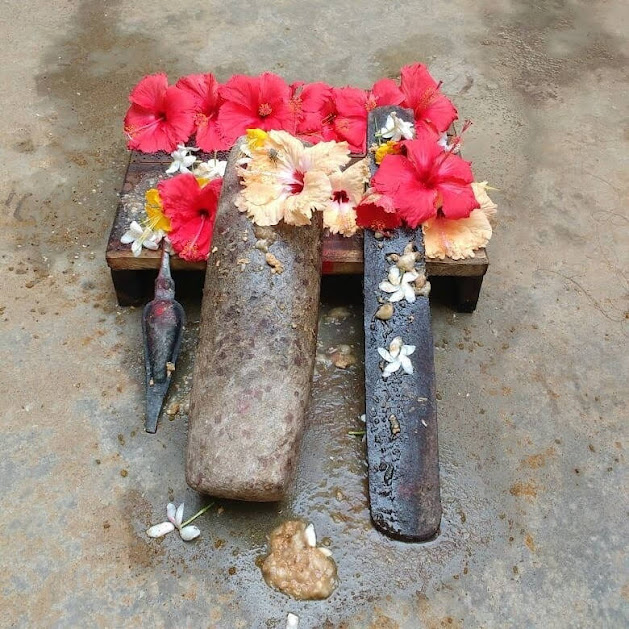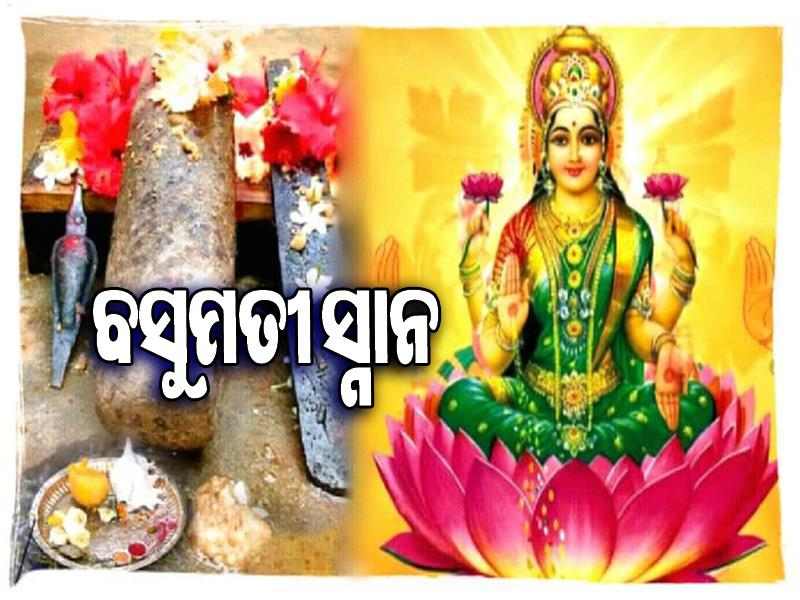Basumati Snana in Odisha In the culturally rich state of Odisha, the festival of Basumati Snana holds immense spiritual and social significance. This auspicious occasion, also known as Deva Snana Purnima or Snan Yatra, is celebrated on the full moon day of the Hindu month of Jyestha (May-June). It marks the ceremonial bath of the deities Jagannath, Balabhadra, and Subhadra, symbolizing their annual visit to the earthly realm.
Basumati Snana centers around the belief that the divine deities descend from the sanctum sanctorum of Shri Jagannath Temple in Puri to a special bathing platform called “Snana Mandap.” The deities are placed in a beautifully decorated altar amidst chanting of sacred hymns and devotional songs. This grand event attracts thousands of devotees from far and wide who gather to witness this sacred ritual.

The ritual begins with the “Pahandi” procession, where the deities are ceremonially brought out of the temple in a rhythmic manner. They are carried on elaborately decorated palanquins by the temple priests and devotees, accompanied by music and dance performances. The procession creates an atmosphere of joy and devotion as devotees eagerly catch a glimpse of the divine beings.
Upon reaching the Snana Mandap, the deities are placed on a silver bath, known as the “Snana Bedi.” The priests perform a series of rituals, including the application of fragrant oils, Basumati Snana in Odisha sandalwood paste, and holy water to cleanse the idols. Devotees offer flowers, fruits, and other auspicious items, seeking blessings and purification of their body, mind, and soul.
One of the most captivating moments during Basumati Snana is the “Hari Harasudha Brahma” ritual, where the deities are bathed with 108 pitchers of sacred water. This ritual signifies the divine showering of blessings upon the devotees and the cleansing of their sins. The holy water used for the bathing ceremony is collected from a sacred well located within the temple premises.
The festival also showcases cultural performances by various artists and groups. Traditional music, dance, and drama fill the air, adding to the festive spirit. Devotees participate in devotional singing and dancing, expressing their devotion and joyous celebration of the divine presence. The vibrant atmosphere creates an ambiance of spiritual bliss and unity.
You can read our another post on Sabitri Brta in Odisha Celebrations

Basumati Snana is not only a religious event but also a social gathering that strengthens community bonds. It brings people from diverse backgrounds together, fostering a sense of harmony and belonging. Devotees share meals and exchange greetings, spreading love and goodwill. The festival serves as a reminder of the importance of communal harmony and the universal spirit of brotherhood.
After the conclusion of the bathing ceremony, the deities are brought back to the temple in a grand procession known as “Bahuda Yatra.” The return journey is marked by Basumati Snana in Odisha immense excitement and devotion as devotees line the streets, seeking blessings and expressing their gratitude to the deities for their divine presence.
Basumati Snana in Odisha is a celebration that encapsulates the essence of spirituality, devotion, and communal harmony. It provides an opportunity for devotees to connect with the divine and seek purification of body and soul. The festival reminds individuals of the eternal Basumati Snana in Odisha bond between humanity and the divine and encourages them to lead a life filled with love, compassion, and righteousness.
More: Wanted to download Odishashop.com visit here
Wtite A FAQ For Basumati Snana in Odisha
What is Basumati Snana in Odisha?
Basumati Snana is a significant ritualistic bath that takes place in the state of Odisha, India. It is part of the Deba Snana Purnima festival celebrated in the holy city of Puri. During this festival, devotees take a bath in a special mud bath known as the Basumati Kund, believed to purify the body and soul.
When does the Basumati Snana festival take place?
The Basumati Snana festival is celebrated on the full moon day of the Hindu month of Jyestha, which usually falls in May or June. It is observed a few days before the famous Rath Yatra or Chariot Festival, which takes place in Puri.
What is the significance of Basumati Snana?
Basumati Snana is believed to cleanse the devotees of their sins and impurities, both physically and spiritually. It is considered an act of devotion and surrender to Lord Jagannath, a form of Lord Vishnu. By taking a dip in the sacred Basumati Kund, devotees seek blessings and forgiveness for their past wrongdoings.
How is the Basumati Snana ritual carried out?
The ritual begins with a grand procession of Lord Jagannath, Lord Balabhadra, and Devi Subhadra from the Jagannath Temple to the bathing site. The idols are placed on a beautifully decorated bathing platform, and devotees gather around the Kund. They take turns to bathe in the Kund, rubbing wet sand and mud on their bodies, while chanting hymns and prayers.
Are there any specific customs associated with Basumati Snana?
Yes, there are certain customs associated with Basumati Snana. Before taking the bath, devotees perform achamana (sipping of holy water), wear sacred silk clothes, and carry offerings like flowers, fruits, and sweets. After the bath, they offer arti (lighted lamps) to the deities, seek their blessings, and participate in various rituals and cultural programs organized in the temple premises.
Concludes
As Basumati Snana concludes, the echoes of devotion and bliss linger in the hearts of the people. The annual ritual serves as a guiding light, inspiring individuals to continue their spiritual journey and embrace the profound teachings of love and humility. The festival leaves a lasting impression, nourishing the souls of the devotees and renewing their commitment to live a life of righteousness and devotion.
